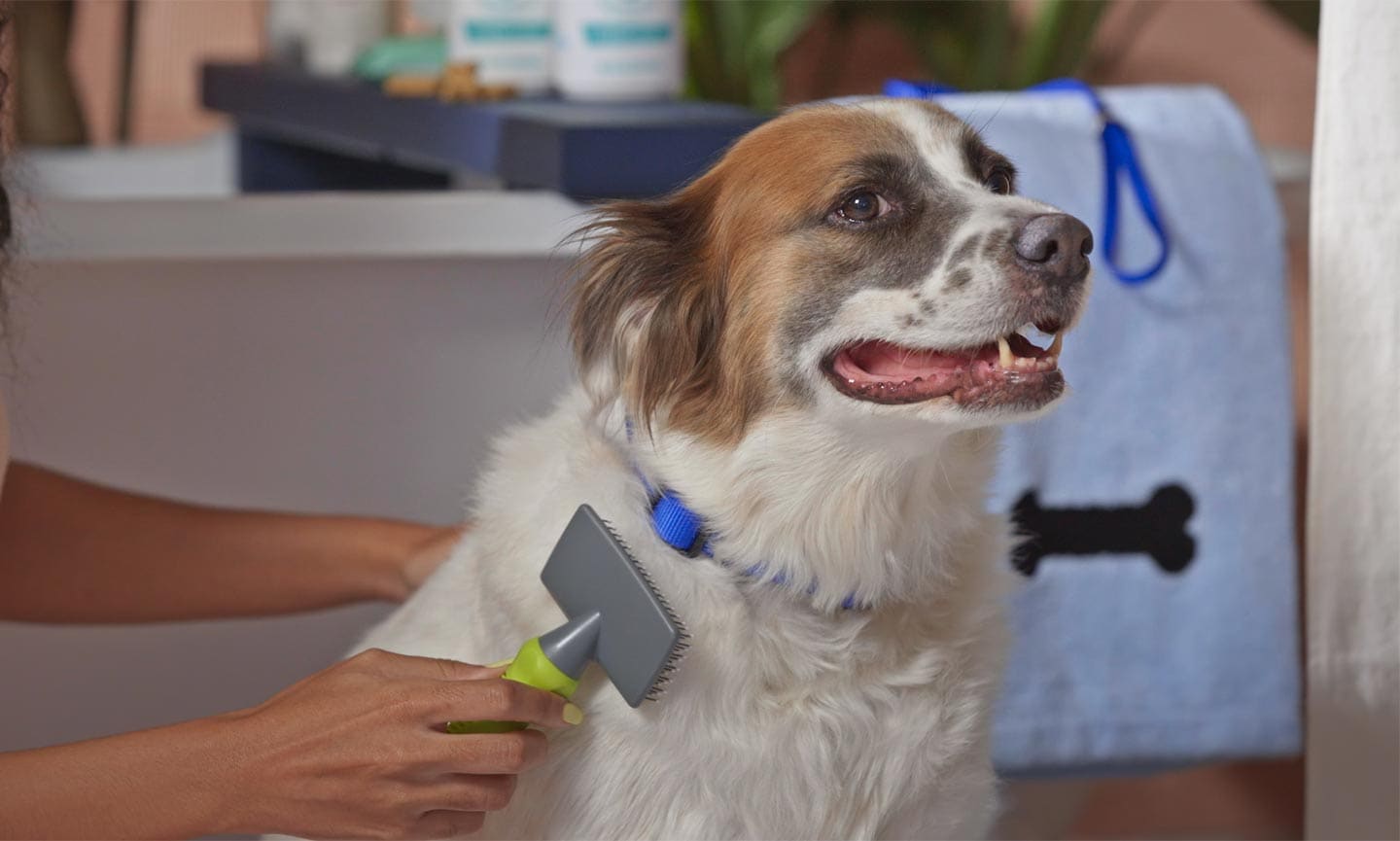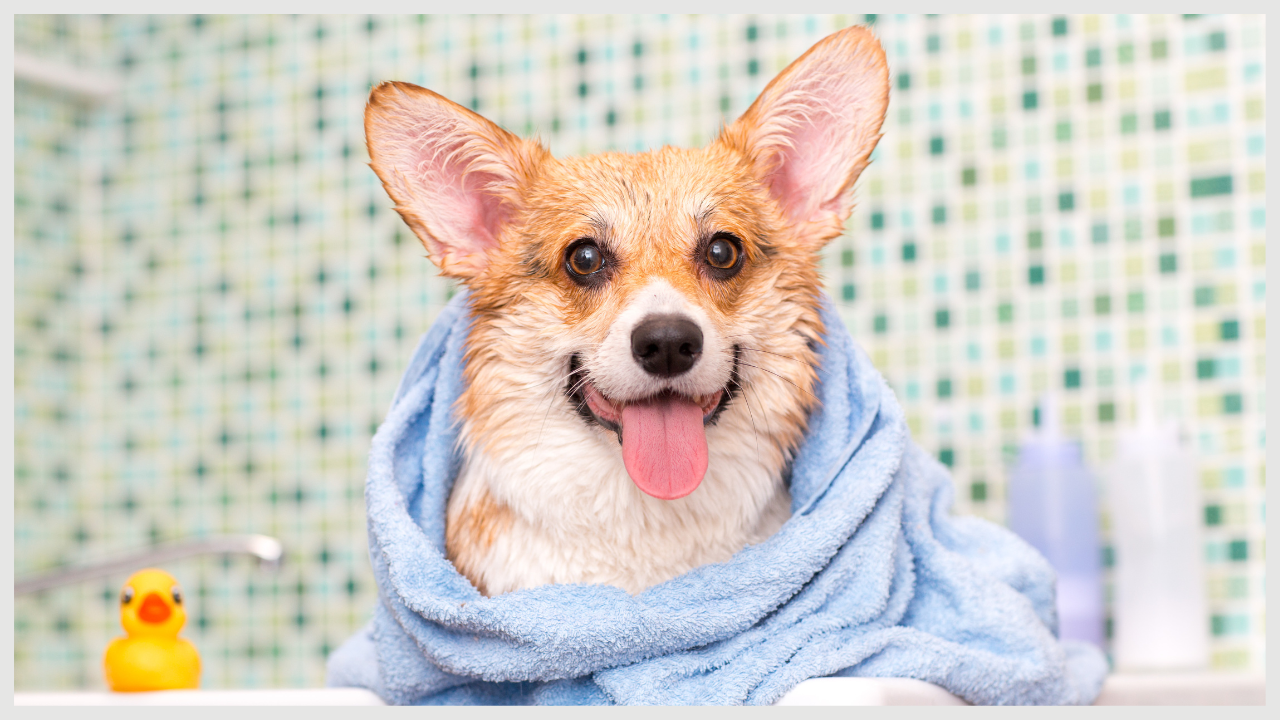How to Bathe Dogs in a Humid Climate
Jul 02, 2024
Bathing your dog in a humid climate is not like bathing your dog in a non-humid climate. In places with high humidity, moisture can linger on a dog's skin and coat, creating an environment for skin infections and odors. Regular can help bathing prevent these issues.
In this article, we’re going to go over everything you need to know about how to bathe dogs in a humid climate. We’ll go over setting up the bathing area, the bathing process, and more! Let’s dive in.
Table of Contents
Setting Up the Bathing Area
Choosing between indoor and outdoor bathing for your dog in a humid climate involves weighing the pros and cons of each option.
Indoor Bathing
Bathing your dog inside offers you control over the environment. You can adjust the water temperature easily and avoid elements like heat, bugs, and dirt. Bathing your dog inside also reduces the risk of your dog getting dirty again right after their bath.
However, bathing your dog indoors, especially in a small bathroom, can become humid quickly. This humidity can prolong the drying process and might make it harder to fully dry your dog. You’ll need to ensure proper ventilation to minimize these effects.
Outdoor Bathing
Bathing outdoors provides more space, which can make the process less stressful for both you and your dog. Bathing your dog outside also helps with the drying process thanks to the natural sunlight.
Outdoor bathing exposes your dog to dirt, pollen, and insects. If it's very hot, the water can become too warm, which can be uncomfortable for your dog as well. Another issue is securing an outdoor area free that's from dirt and smells. It can be hard to create this but it's essential to prevent your dog from getting dirty.
Creating a Safe and Comfortable Area
Whether you choose to bathe your dog inside or out, ensuring the area is safe and comfortable is important. For indoor baths, use a non-slip mat and have all your supplies within reach to avoid accidents.
For outdoor baths, select an area in the shade to protect your dog from direct sunlight which can cause overheating. A garden hose with an adjustable nozzle is ideal because it can help control water flow and pressure.
Water Temperature
The temperature of the water you use is important for your dog’s comfort and safety. The ideal water temperature for bathing your dog is lukewarm. This temperature is comfortable and helps remove dirt and oils without causing distress.
In a humid climate, you should adjust the water temperature to be slightly cooler to compensate for the heat. Always test the water with your hand before starting the bath to ensure it’s at a safe and comfortable temperature.

Bathing Process
Brushing Your Dog
Before starting the bath, you should brush your dog. This step removes tangles and loose fur, making the bathing process smoother. Tangled fur traps water, leading to matting, which can be painful for your dog.
Checking for Skin Issues
Inspect your dog's skin thoroughly before the bath. Look for signs of irritation, such as redness, bumps, or sores. Detecting issues like hot spots, infections, or parasites early allows you to address them before they worsen. If you find any concerning spots, consult your vet before proceeding with the bath.
Wet Your Dog Thoroughly
Start by wetting your dog’s coat thoroughly. This step ensures that the shampoo will spread evenly and lather well. Use lukewarm water and start from the neck, moving down to the tail. Avoid spraying water directly on your dog's face.
Applying Shampoo
Choose a shampoo formulated for dogs, preferably one with anti-fungal and anti-bacterial properties if your dog is prone to skin issues. Pour a small amount of shampoo into your hands and lather it up before applying it to your dog’s coat. Start from the neck and work your way down, making sure to cover the underbelly, legs, and tail. Focus on areas that tend to get dirtier, such as the paws and underbelly.
Rinsing
Rinse your dog well to remove all the shampoo. In a humid climate, making sure no residue remains is critical for preventing skin irritation and potential infections. Use lukewarm water, start from the neck, and make your way down to the tail. Make sure to rinse the underbelly, legs, and paws well.
Conditioning
Apply a moisturizing conditioner to your dog’s coat. Conditioners help to restore moisture, making the coat soft and reducing the likelihood of tangles. Like the shampoo, start from the neck and work your way down. Allow the conditioner to sit for the recommended time on the product label.
Final Rinse
Conduct a final rinse to remove all traces of the conditioner. This step is crucial to prevent any residue, which can lead to skin issues in humid conditions. Ensure you rinse thoroughly until the water runs clear.

Post-Bath Care
Towel drying is the first step after your dog's bath. Start by wrapping your dog in a large, absorbent towel. Preferably a microfiber towel, this is because these towels are ideal because they absorb more water than regular towels.
Gently pat your dog’s fur to remove excess water. Avoid rubbing vigorously, as this can cause tangling and discomfort. Use multiple towels to ensure thorough drying, especially for dogs with thick or long coats.
Using a Blow Dryer
A blow dryer designed specifically for dogs can speed up the drying process. Human hair dryers can get too hot, potentially causing burns or discomfort. Look for a pet blow dryer with adjustable temperature and airflow settings.
Set the dryer to a cool or warm setting, never hot, and keep it moving to avoid focusing heat on one spot. Hold the dryer at least a few inches away from your dog's fur and work in sections.
Natural Air Drying
In a humid climate, air drying may not be the best option. Humidity can make the drying process longer, increasing the risk of infections. If you choose to air dry, ensure your dog is in a cool, dry place.
Monitor your dog for signs of discomfort and ensure they don't lie down in damp or dirty areas while drying.
Brushing and Final Touches
Brushing your dog after the bath prevents tangles and mats. It also helps distribute natural oils throughout the coat, promoting a healthy shine. Use a brush suitable for your dog’s coat type. Start from the head and work your way down, being gentle to avoid pulling on any tangles that might have formed during the bath.
Pay special attention to areas where moisture tends to linger, such as under the collar, between the toes, and in skin folds. Use a dry towel to pat these areas and consider using the blow dryer briefly to ensure thorough drying.
Wrapping Up
Bathing your dog in a humid climate presents unique challenges, but with the right approach, you can keep your dog clean and healthy. By following the process above, you can make bath time a positive experience for both you and your dog.
